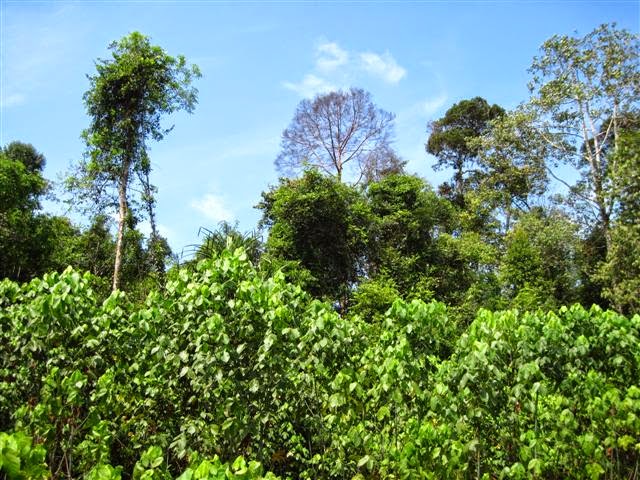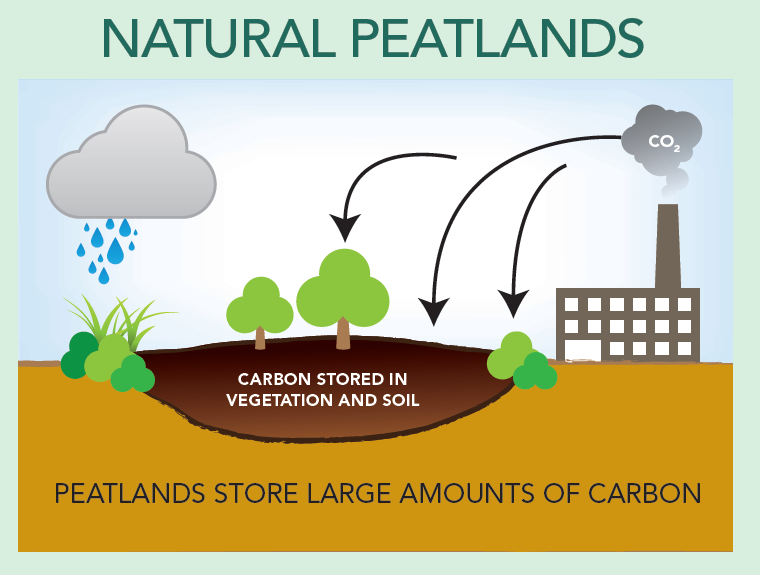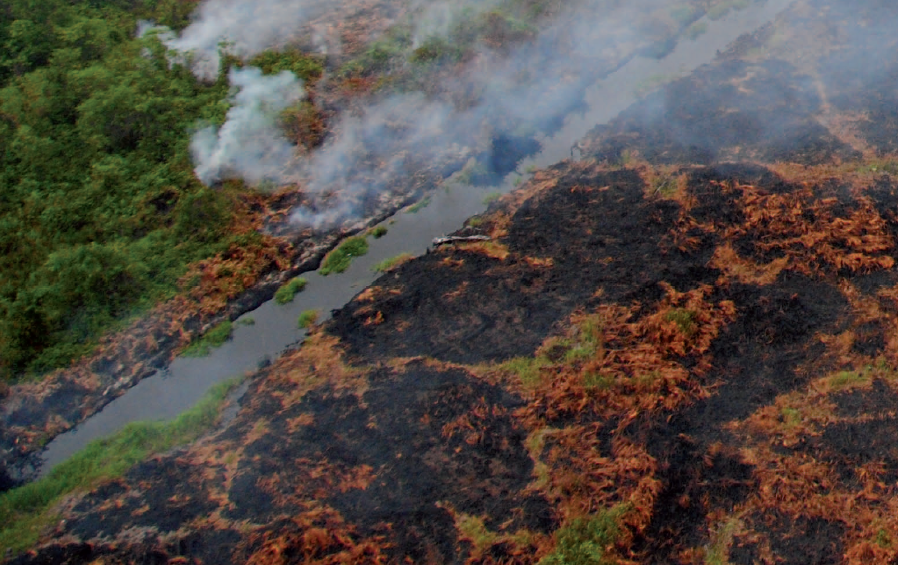Disappearing peatlands in Southeast Asia: Why you should care and how you can help

Did you know that an estimated 400 million hectares of land on earth is actually peatland? But what are peatlands, you may ask. Peatland is a type of moist, swampy forest that stores a lot of carbon and water. I didn’t know that either until we started talking to the Global Environment Centre (GEC). GEC is a Malaysian non-governmental organisation committed to saving and preserving the environment, and they are one of the few organisations in the world that work with peatlands, a very important type of forest.
What are peatlands?
Peatlands are made up of peat soil, a type of soil that is 65% organic matter, partially made up of decayed leaves, roots, and stems. Peat is formed when organic matter accumulates faster than it decomposes, so over time, peat layers up to create swamps with peat soil that can go up to 20m deep.
Globally, about 11% (44.1 million hectares) of all peatlands is tropical peatlands, and 56% of tropical peatlands are found in Southeast Asia. That’s a staggering 24.8 million hectares. Indonesia leads the way with 20.7 million hectares while Malaysia is homes to 2.6 million hectares of peatlands. Since peatlands cover a vast area of earth and have such high carbon content, the stability of peatlands are very important and can have significant impact on climate. However, peatlands are also very fragile and are facing mounting threats from development and encroachment.
Importance of peatlands
Peat swamp forests are lowland vegetation in tropical peatlands where most of the flora and fauna are uniquely adapted to the environment – i.e waterlogged and acidic water. Peat swamps are important for many reasons, mainly as a source of fresh water, flood mitigation, carbon sink and store, and to safeguard biodiversity.
Unfortunately, Western Europe has lost nearly 90% of its peatlands while Central Europe only has 50% of its functioning peatlands. In Asia, 70% of peat swamps have been lost. Now, more than ever, safeguarding and rehabilitating peatlands are an important effort for the good of the planet and its inhabitants.
Peatlands as carbon sinks
One very surprising fact about peatlands is that these forests store about 30% of all carbon on land. That’s about 500 billion tonnes of carbon! Peatlands in Southeast Asia alone hold 14%, or approximately, 68 billion tonnes of carbon in the world. Making sure the carbon in peatlands go undisturbed is the key to regulating climate as improperly managed peatlands can cause a massive release of carbon into the air, which even basic science will tell you is very, very bad.
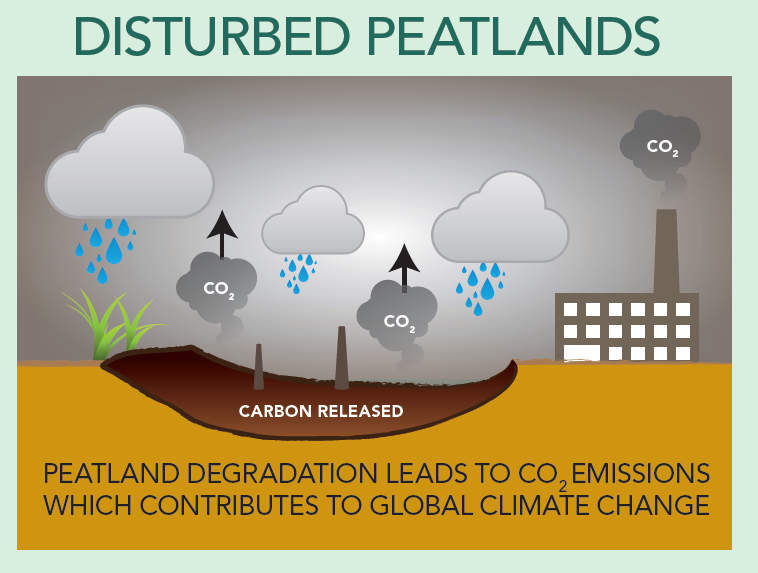
When peatlands are cleared for development or agriculture, water is drained from area, thus causing the carbon stored in peats to oxidise and release into the air in the form of carbon dioxide. The excess release of carbon into the air causes rising global temperatures. Excess carbon can also cause the acidity levels in oceans to rise, which can lead to a host of problems for marine wildlife.
Also, when peats are drained of water, huge piles of dry and highly combustible peat is left behind. This makes the whole area now susceptible to fire. Even one stray, lit cigarette bud can cause a blaze. When peat catches fire, the flames tends to penetrate beneath the surface, which means it can continue to burn underneath even when surface fires have been put out.
This is what causes the haze we are unfortunately familiar with in Malaysia and Indonesia – not regular forest fires, but specifically fires in peat forests. Weeks, and sometimes months, of continued burning of peat beneath the surface releases a continuous stream of carbon dioxide and smoke into the atmosphere, contributing significantly to global greenhouse gas emissions, and affecting the health of those exposed to the haze.
Peatlands and water regulation
Apart from storing vast amounts of carbon, peatlands consists of approximately 90% of water in soil, stored amongst the decaying, porous organic matter (dried leaves, etc). This gives the forest floor a muddy quality typically associated with swamps and bogs, both different types of peatlands.
Healthy, wet peatlands absorb pollutants from the atmosphere, including nitrogen, sulphur dioxide, heavy metals and carbon. These pollutants are what make peat soil acidic. Since the pollutants are absorbed into the soil, water that flows out of peatlands into the ground or rivers come out clean – like a natural filtration system.
When peatlands are drained, it will not be able to regulate pollutants in the atmosphere as well as it should, and that will result in an increase of carbon in water. Water with high carbon content will need to be treated before it can be safely used, and the treatment process is both expensive and results in harmful by-products.
Apart from regulating pollutants, peatlands also regulate excess water. Peatlands can reduce downstream flooding as it acts like a sponge to soak up excess water. And in dry seasons, peatlands slowly release water, thus ensuring a source of fresh water for surrounding communities. Peatlands are great water reservoirs for irrigation, hydro-electricity, recreation, aquatic farming, and as a source of clean water.
Reasons for peat swamp loss in SEA
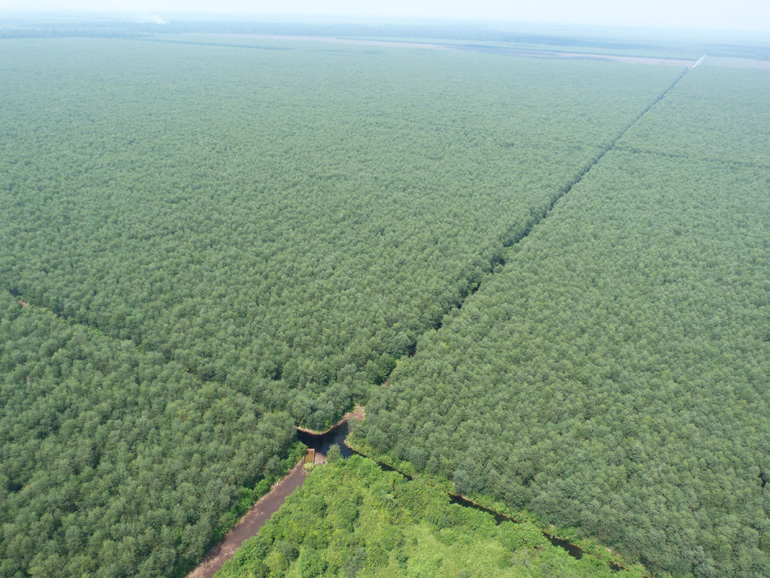
Impressive work for a simple, fragile forest, don’t you think? The problem we’re facing now is that many people are still very ignorant about the importance and fragility of peatlands. For decades now, peatlands in this region have been threatened by deforestation and changing land use.
Many peat forests are being cut down and drained to be used to set up oil palm and acacia plantations. Peat forests are also being logged for timber and agricultural purposes. So far, demand for palm oil and paper remains high, so plantations are continuously expanding. Companies drain peat swamps and change the use of the land to suit their own purpose with no regard for the environmental consequences.
The reason for the hazy season
Let’s take what we know and put it into context. We know that peatlands are a massive carbon storage, up to 68 billion tonnes in Southeast Asia alone. Since 1997, there has been an average of 2 billion tonnes of carbon dioxide released into the air every year from peatlands in Southeast Asia as a result of deforestation, drainage, degradation, and conversion to plantations. That’s about 30% the global CO2 emissions from fossil fuels.
The unchecked logging and damage done to these forests are having a significant negative impact on climate change, and consequently, the living quality of every person on the planet. This ill-management of such an important type of forest needs to stop. Those involved, especially companies in the agriculture and plantation business need to learn how to conduct their job in harmony with the forest, for the sake of the planet’s health.
According to numbers by GEC, the 2015 haze was the worst we’ve experienced this decade. 2 million hectares of peatlands in Indonesia were illegally and deliberately burnt down, cause acrid haze to spread to countries around the region covering a 5 million km2 radius. That burning released 1.6 billion tonnes of carbon dioxide into the air in only 2 months, and millions of residents were forced to evacuate while over 500,000 reported having respiratory problems caused by the haze. Scarily, that single event is expected to cause over 100,000 premature deaths.
How can you help?
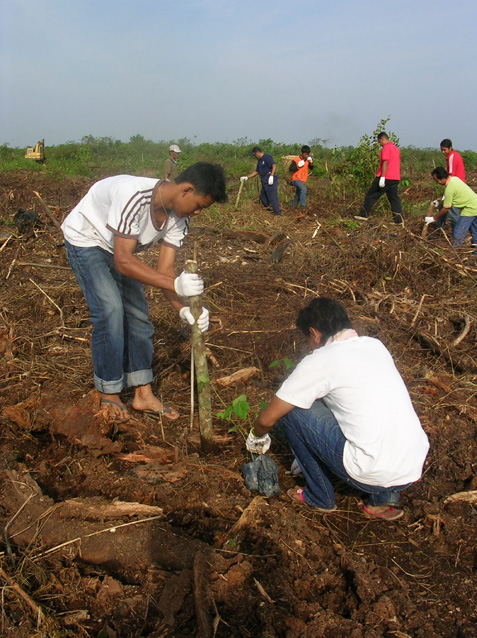 Fortunately, like many problems, there are solutions. As mentioned before, education and awareness campaigns can be helpful. When communities who live near peatlands are taught about the importance of keeping the forest safe, then rehabilitation and sustaining the health of the forests is no longer impossible.
Fortunately, like many problems, there are solutions. As mentioned before, education and awareness campaigns can be helpful. When communities who live near peatlands are taught about the importance of keeping the forest safe, then rehabilitation and sustaining the health of the forests is no longer impossible.
With the help of the GEC, several communities around the country have set up eco-clubs to continuously clean, manage, and rehabilitate these precious forests, as well as spread awareness and educate other people.
If you’d like to help, you can donate to the GEC to help them continue carrying out their programs, or sign up for a tree planting program. You can head over to the GEC website to sign up.
Slots are limited, though, so you have to be quick. Right now, slots are almost all full for the rest of the year, so you might have to wait till next year to join in on the action.
Established in 1998, GEC is focused on three core areas of environmental care: forest, river, and climate change. Through conservation projects, outreach, partnerships, and community engagement, GEC has managed to rehabilitate forests, and reeducate communities to start living in harmony with their natural surroundings.
All photos and data sourced from the Global Environment Centre (GEC).
"ExpatGo welcomes and encourages comments, input, and divergent opinions. However, we kindly request that you use suitable language in your comments, and refrain from any sort of personal attack, hate speech, or disparaging rhetoric. Comments not in line with this are subject to removal from the site. "


